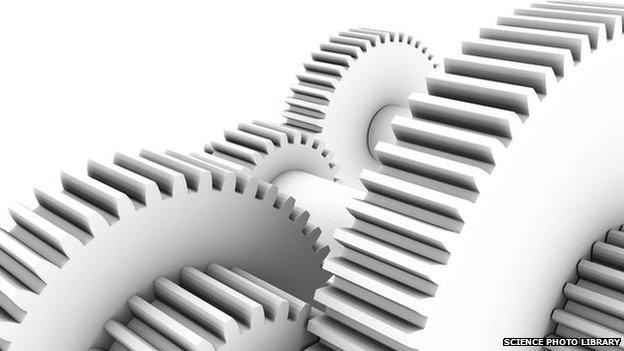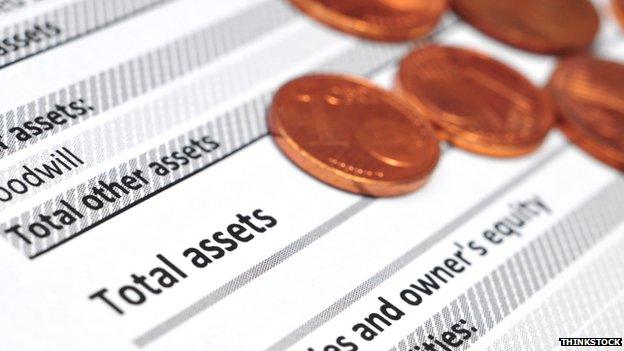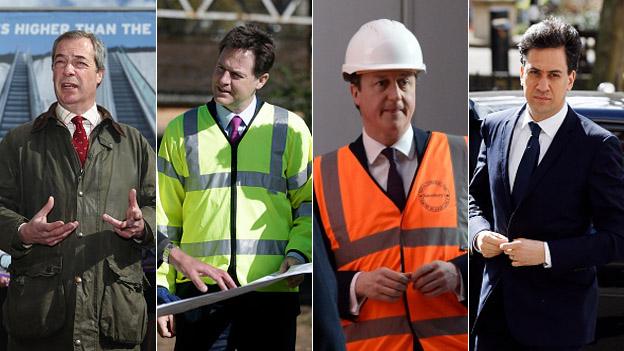When is a boom not a boom?
- Published

In his column today, the FT's Martin Wolf assesses the economic record of the coalition government, external. But any assessment of the current government's record can't just begin in 2010, they did not inherit a blank slate, any more than the incoming Labour government did in 1997.
Wolf today writes that "the argument that the UK economy was in a grossly unsustainable state in 2007 is largely ex-post rationalisation." That's a point recently made by Oxford Economics Professor Simon Wren-Lewis, external in a series of posts arguing against what he terms "media macro" - or macroeconomic reporting - that he feels bears no relation to reality.
This question - of whether the UK economy was in a sustainable or an unsustainable position in 2007 is important. It doesn't just help us judge the performance of the last two governments but it may also give us clues to the state of the economy today.
Prof Wren-Lewis's case against an unsustainable boom is straightforward.
Firstly he notes that, while there was clearly a boom in house prices, that isn't necessarily reflective of the wider state of the economy.
Secondly he turns to the concept at the heart of this economic debate: "output gap". That's the gap between how much output the economy is actually producing and the level of output which would keep inflation constant.
In simple terms it's a way of thinking about the relationship between the demand side of the economy (spending) and the supply side (or the economy's ability to produce goods and services).
A positive output gap suggests an economy is at risk of overheating: the demand for goods is outstripping supply and one would expect prices to rise. If the output gap is negative, then the opposite is happening: the economy's ability provide goods and services is not being matched by adequate for demand for that output.
As Prof Wren-Lewis notes, back in 2007 the Treasury, the independent Institute for Fiscal Studies and international observers such as the IMF and the OECD all believed the UK output gap was small. That's a strong case against an unsustainable boom.
As Wren-Lewis argues, there was also little sign of a problem in the unemployment data, inflation or interest rates.
Productivity growth
Subsequently the IMF and OECD have both - in retrospect - raised their estimates of the UK output gap in 2007 substantially. In effect they now argue that although they did not see it at the time, the UK's position in 2007 was indeed unsustainable.
The output gap is not something that can be "measured", only "estimated" and that can make it a difficult guide to policy.

Martin Wolf is the chief economics commentator at the Financial Times
Further support for Wren-Lewis and Wolf's position can be found in a study published in 2011 by the London School of Economics, external on the UK's economic record since 1997. It found that the UK enjoyed a strong performance in terms of growth and employment until 2007 and that crucially this was underpinned by strong productivity growth.
A plausible story can be told, that the UK enjoyed a strong performance in terms of economic growth, employment and productivity from 1997 until 2007, when it was knocked off course by global events and financial crisis. But there are at least three reasons to think this might not be the whole picture.
First, as has since gained relatively widespread acceptance - growth by 2007 has become unbalanced. That's a point that is now made by politicians from all the major parties.
In particular the UK's tax base had become overly reliant on too few sectors. This was a point made by the OBR in July 2011, external, which argued that the fall in revenue from the finance and housing sectors post-2008 was "one of the primary drivers of the severe deterioration in the UK public finances in recent years, exposing the risks to sustainability of reliance on revenue from these sectors".
Miracle or mirage?
Second, there are reasons to fret that the strong productivity performance that underpinned growth was not all that it appeared to be.
Andy Haldane, the Bank of England's chief economist, has argued, external that what was seen at the time as a "productivity miracle" in financial services may have actually been a "mirage". As banks ran more risks their profits increased and they appeared to be much more productive but eventually those risks turned bad.
This offers a partial and pessimistic answer to the UK's high-profile productivity puzzle: it may be that productivity growth didn't suddenly fall off a cliff in 2008, it was actually weaker than it appeared all along.
Finally, though, most of the above analysis has concentrated on the traditional ways in which we score macroeconomic performance - growth, jobs and productivity - looked at through an alternative frame that performance looks impressive. An important Bank of England research paper published in 2011 provides that alternative frame, external.
Rather than focusing on just GDP and other "real" factors it takes seriously financial factors - the flow of credit between different sectors, changes in asset prices and the state of household, company and bank balance sheets. As the authors of that paper concluded:
"While real activity and consumer prices were stable, asset prices, financing flows and balance sheets were manifestly not. There were two distinct episodes in financial markets over this period: the tech boom of the 90s and the credit expansion of the 2000s. When the credit boom collapsed it completely overwhelmed the system."

The Bank of England looked at an alternative measure of performance that included household, company and bank balance sheets
It's this analysis which really demonstrates the importance of what might sound like a sterile academic and historical debate.
A focus on balance sheets, asset prices and credit flows rings alarm bells about the state of the UK economy in 2007. It suggests that the experience of 2008 onwards was not just a sudden bolt from the blue but the result of fundamental imbalances in the UK economy.
While credit growth has been much weaker in recent years than before 2007, there are reasons to worry that the UK's current recovery is demonstrating some of the same patterns.
The household savings ratio (the amount of their income saved by households in aggregate), which rose in 2009 and 2010, has now fallen back to roughly where it was in the middle of the last decade. Asset prices (from shares to houses) have risen strongly and the UK is running its largest current account deficit (borrowing from the rest of the world) since the Second World War.
The economics profession is divided on whether the UK's position in 2007 was unsustainable or not. But if it was unsustainable in 2007 then there are reasons to worry it might be becoming so once again.
- Published31 March 2015
